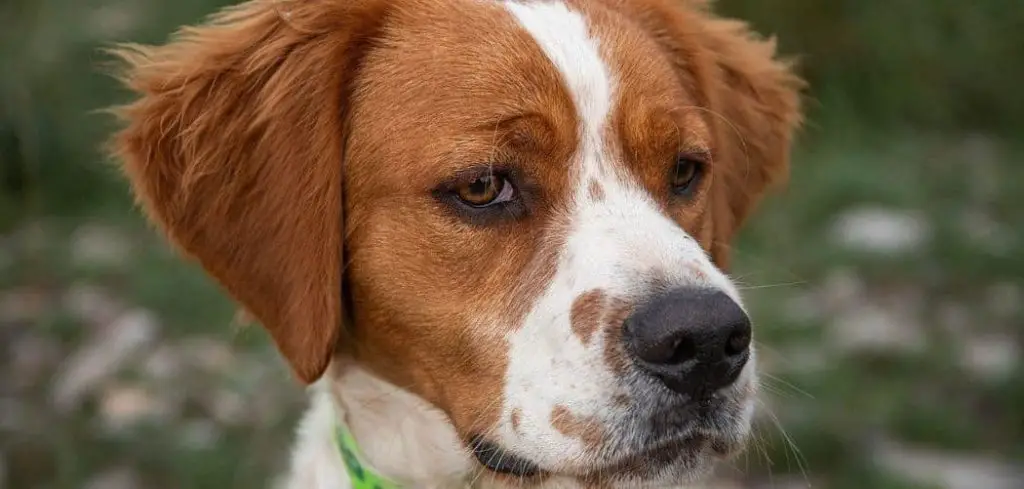If your dog is panting heavily and drinking more water than usual, it’s easy to worry. These two symptoms can signal everything from heat stress to more serious internal conditions that require veterinary attention.
We outline the common causes of dog panting and drinking a lot of water, what you can do at home, and when to seek veterinary help.
Table of Contents
Why Is My Dog Panting and Drinking a Lot of Water — What It Means
Dogs pant and drink more water when they are overheated, anxious, in pain, or experiencing an internal imbalance such as hormonal or organ dysfunction.
These signs often appear together because panting helps regulate body temperature, and increased thirst is the body’s attempt to correct dehydration or internal stress.

Common Causes of Dog Panting and Drinking a Lot of Water
Heat and Dehydration
Excessive panting and water consumption are natural responses to heat or physical exertion.
Dogs cool themselves through panting and need water to stay hydrated.
Prolonged exposure to heat without shade or water can lead to heatstroke.
Early signs include excessive drooling, red gums, and lethargy.
If not addressed, heatstroke can cause collapse and organ damage.
Anxiety and Stress
Nervous or anxious dogs pant and drink more as part of the body’s stress response.
Common triggers include loud noises, separation, vet visits, or travel.
Panting may be rapid, shallow, and paired with pacing or whining.
Drinking water can be a self-soothing behavior.
If this happens regularly, your dog may be dealing with chronic anxiety.
Read more: Dog Panting and Not Eating (When to worry)
Pain or Discomfort
Panting is a common symptom of pain, especially internal pain that’s not immediately visible.
Dogs with abdominal issues, joint pain, or injuries may also drink more.
Look for signs like reluctance to move, stiffness, or yelping.
Pain can also elevate heart rate and increase thirst.
Cushing’s Disease
Cushing’s disease (hyperadrenocorticism) causes increased cortisol levels, leading to panting and excessive thirst.
Other symptoms include a pot-bellied appearance, hair loss, and increased appetite.
It’s more common in middle-aged to older dogs.
Diagnosis requires blood tests and imaging.
Diabetes Mellitus
In diabetic dogs, sugar buildup in the bloodstream triggers dehydration and excessive thirst.
Panting may occur alongside lethargy, weight loss, or urinary accidents.
Diabetes can be managed with insulin and diet.
Sudden onset of these symptoms in middle-aged or older dogs should be evaluated quickly.
Kidney Disease
Kidneys regulate fluid balance. When they fail, the body compensates by drinking more.
Dogs may also pant due to nausea, toxin buildup, or anemia.
Additional signs include vomiting, bad breath, and decreased appetite.
Bloodwork and urine tests help confirm the diagnosis.
Medication Side Effects
Some medications—like prednisone or seizure drugs—increase thirst and panting as side effects.
These symptoms should be monitored and discussed with your vet.
Never stop or adjust medications without professional guidance.
What to Do If Your Dog Is Panting and Drinking Excessively
Observe when the symptoms occur:
After exercise or heat exposure?
During times of stress or loud noise?
Is your dog eating normally?
Are there other changes like vomiting or peeing more?
Keep fresh, cool water available and ensure your dog has a comfortable, shaded space to rest.
Avoid overexertion during hot weather and monitor for worsening signs.
Document any new or concerning symptoms and call your vet if they persist beyond 24 hours or worsen.
When to Call or Visit the Vet
Contact your veterinarian if your dog:
Pants heavily at rest
Drinks excessive water over multiple days
Shows changes in appetite, urination, or energy levels
Vomits, appears disoriented, or becomes lethargic
A full physical exam, along with lab tests, will help pinpoint the cause and guide treatment.
Read more: Dog Panting and Diarrhea (What it means)
Key Takeaway
Panting and increased water intake are not always alarming on their own—but together, they can be a signal that your dog’s body is under stress.
Whether it’s heat, pain, or a chronic condition, don’t ignore these signs if they last longer than a short cooling-off period.
Your vet can help determine the underlying issue and provide a plan to keep your dog hydrated, comfortable, and healthy.
